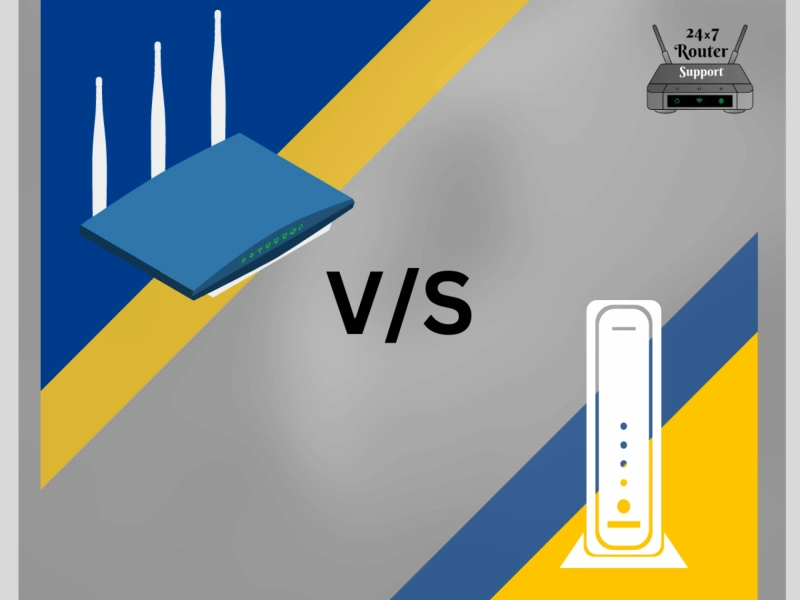In today\'s connected world, we often hear the terms "router" and "modem" being used interchangeably. While they both play essential roles in connecting our devices to the internet, they are not the same thing. Understanding the difference between router and modem is crucial, especially when setting up a network or troubleshooting connectivity issues. In this article, we will dive deep into the details of routers and modems, explore their functions, and explain how they work together to keep us connected.
What is a Modem?
Let\'s start by defining what a modem is. Short for "modulator-demodulator," a modem is a device that connects your home or office network to your Internet Service Provider (ISP). It serves as the bridge between your local network and the larger network of the internet. When you sign up for an internet plan with your ISP, they will provide you with a modem. The modem connects to your ISP\'s network infrastructure and enables you to access the internet.
A modem performs two essential functions. First, it receives data from your ISP over the internet connection and translates it into a format that your devices can understand. This process is known as modulation. Second, it takes the data generated by your devices, converts it into a format that is suitable for transmission over the internet, and sends it to your ISP. This process is called demodulation. In simpler terms, the modem translates data from your ISP into a language that your devices can comprehend and vice versa.
What is a Router?
Now that we understand the role of a modem, let\'s shift our focus to routers. A router is a device that allows multiple devices within a local network to communicate with each other and share a single internet connection. It acts as a central hub, directing network traffic between different devices and managing the flow of data.
When you connect your devices, such as smartphones, laptops, or smart home devices, to a router, it assigns each device a unique IP address, allowing them to communicate with one another. Additionally, a router employs a technology called Network Address Translation (NAT) to manage the traffic going in and out of your local network. This feature enhances security by hiding the IP addresses of your devices from the internet, adding an extra layer of protection.
How Do Routers and Modems Work Together?
Though there are differences between a router and a modem, still you need both a modem and a router for establishing a functional home or office network. The modem connects your network to the internet, while the router enables communication between your devices and manages network traffic.
When you sign up for an internet plan, your ISP will provide you with a modem. This modem typically has a port to connect your router. Once you connect your router to the modem, the router takes over the task of managing your local network. It assigns IP addresses to devices, handles network traffic, and provides additional features such as firewall protection, Quality of Service (QoS) controls, and wireless connectivity if it\'s a wireless router.
Setting Up a Router and Configuring It
Now that we understand the difference between a modem and a router, let\'s discuss how to set up a router and configure it for optimal performance.
- Physical Setup: Start by connecting your router to the modem using an Ethernet cable. Most routers have a dedicated WAN (Wide Area Network) port. Ensure that both devices are powered on.
- Access Router Settings: To configure your router, you need to access its settings. This is usually done by typing the router\'s default IP address (e.g., 192.168.1.1 or 192.168.0.1) into your web browser. Consult the router\'s manual or the manufacturer\'s website for the specific IP address.
- Login and Security: Once you access the router\'s settings, you will be prompted to enter a username and password. If it\'s your first time accessing the settings, consult the router\'s manual for the default login credentials. For security reasons, changing the default password after logging in is essential.
- Network Configuration: Inside the router\'s settings, you will find various options to configure your network. You can set the SSID (network name), Wi-Fi password, and security settings, among other setting options. Ensure that you choose a strong Wi-Fi password to protect your network from unauthorized access.
- Advanced Configuration: Depending on your needs, you may explore advanced settings such as port forwarding, QoS controls, VPN (Virtual Private Network) configuration, and firewall settings. These options allow you to customize your network based on specific requirements.
- Firmware Updates: It\'s crucial to keep your router\'s firmware up to date to ensure optimal performance, security, and bug fixes. Check the manufacturer\'s website periodically for firmware updates and follow the instructions to install them.
By following these steps, you can set up and configure your router, tailoring it to your network\'s needs and ensuring a secure and efficient connection for all your devices.
Conclusion
While there are differences between routers and modems but they work together to establish a reliable and secure network connection. The modem connects your network to the internet, while the router enables communication between devices within your local network. Understanding the difference and knowing how to set up and configure your router will empower you to create a robust and efficient network that caters to your specific requirements.
So, these were the functioning and differences between the router and a modem. Hope you enjoyed reading this blog. To read more such informative blogs on routers and an internet connection, you can visit 24x7 Router Support’s blogs.
Related Topics:
How to Troubleshoot NETGEAR Router 403 Forbidden Error
6 Common Router Network Problems and How to Fix Them: A Complete Guide
How Mesh Networking Can Solve Your Router Connection Problems



